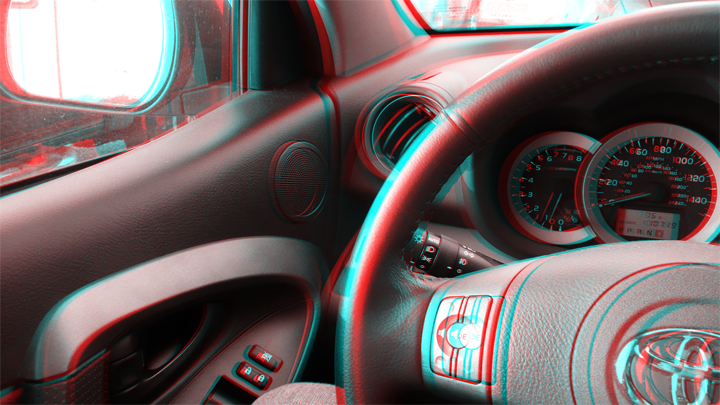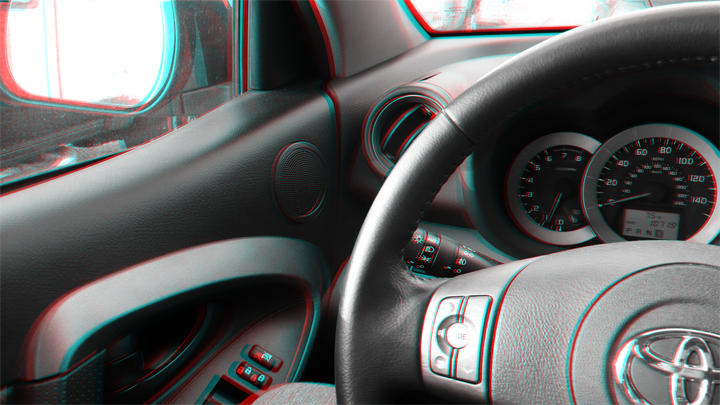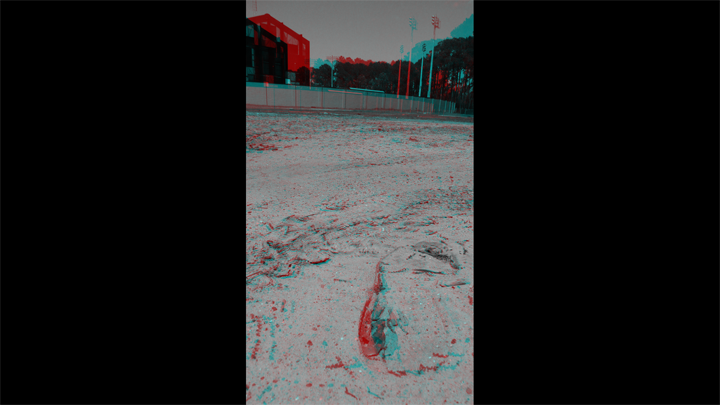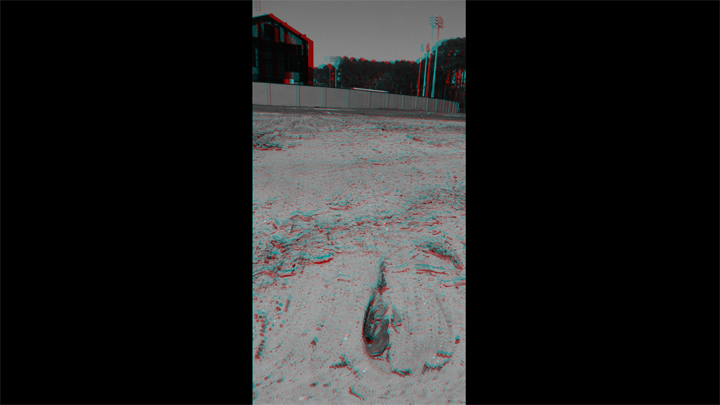Stereoscopic Imaging
Conversion
Using any method available, I converted a monoscopic image into a stereoscopic image.


Overview
This assignment was very short and sweet - mostly because we did not have the proper equipment to convert a monoscopic image into a stereoscopic image. So I was allowed to use any method I could think of to try and create a stereoscopic image from a monoscopic one. I took two stereoscopic images from my previous assignment, I used one image (the left eye image) and kept that as my "master" image. Then working from that image in Photoshop and moving things around and painting them, I created a right eye image from my main original left eye image. Finally, I took my newly manufactured right eye image and created an anaglyph image with that converted image and I compared it to the original anaglyph to see the advantages and disadvantages of a conversion process.
In addition to using 0hotoshop and painting or manipulating a main image, other methods of conversion could've been a 2.5D Projection in Maya or Nuke (or any 3D application). Or using a created Depth Map to simulate the depth that would've been in the image. And then by using that depth map, a displacement is created to offset the second eye image. So other techniques do exist, I simply chose to use 0hotoshop
Review
What I Learned/Challenges
- I learned how time consuming and annoying it is to perform a conversion.
- I learned about about the depth map and displacement conversion method from a classmate who figured out how to make that work.
Second Set of Conversion
For this conversion, my goal was to try to see if I could create a strong sense of depth throughout the entire image. Since this image is so large in terms of depth, normal methods to capture a stereo image will only create the depth in a limited range. Through conversion, I hoped to see if I could work around that to put depth all throughout the image instead of just the foot impression. I was partially successful, but my depth was no where near as strong as my original stereo pair image.


---------------------------------------------------------
This class introduced the founding principles of stereoscopic imaging and it's applications, restrictions, limitations, and development in a variety of mediums. It highly encouraged experimentation to help the class further it's understanding of stereo and simply what works and what doesn't work.
All work was developed for viewing anaglyphicly using Red/Cyan (or Red/Blue) glasses since that was the best and easiest method to review the work during the development process. If you want to get your own anaglyph glasses, check Rainbow Symphony (they will also send you a free pair of anaglyph glasses if you send them a self-addressed, stamped envelope). I do still have the full color original sources if they are desired, I simply don't have a way to display or view them myself.
